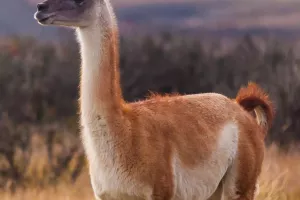Giraffes are ruminant cloven-hoofed animals that live in Africa, and they are the tallest living terrestrial animals in the world. When standing, it can reach 6-8 meters from head to toe, weigh about 700 kg, and the newborn cub is 1.5 meters high. The teeth of giraffes are primitive low-crowned teeth, which cannot feed on grass and can only feed on leaves; their tongues are longer and can be used for feeding.
Giraffes have long necks like other mammals, with only seven vertebrae, but their vertebrae are longer and have thick muscles tightly connected to each other. The torso is short, sloping down from the shoulders to the hips. The nape has manes. The tail is long with a tuft of long hair at the end. The front legs are longer than the hind legs.
Giraffes' slender body creates a series of challenges that they overcome with their remarkable adaptations. To pump blood to their towering heads, seven feet above their hearts, they need extraordinarily high blood pressure, three times the systolic blood pressure of humans. In order not to burst the arteries, they must have special support structures inside the arteries.
Because of the long legs, giraffes are very inconvenient to drink water. They have to spread their front legs or kneel on the ground to drink water, and they are very vulnerable to other animals when drinking water, so giraffes who live in groups often do not drink water together.
Giraffes sleep very little, typically only two hours a night, and sleep can sometimes put them at risk. Giraffes sleep standing up most of the time, usually standing and dozing. Giraffes also need to lie down and rest when they enter the sleep phase, which lasts about 20 minutes. However, since it takes about a minute for a giraffe to stand up from the ground, this greatly reduces their ability to escape during sleep.
Giraffes have long tongues: Giraffes take advantage of their height to eat leaves and shoots at the top of trees, a height that few animals can reach. In addition, giraffes have unimaginably long tongues. The 53-centimeter tongue can help them rip leaves from branches and clean up baby giraffes.
Giraffes are gentle, courteous and courteous among groups. They accompany each other warmly, get close to each other, and take care of each other. Their long legs are often accidentally bumped together, which usually lasts a long time, but they never quarrel or fight over such trifles. This proximity to each other is both a warmth and a safety that simultaneously spreads silently to every giraffe in the group.


